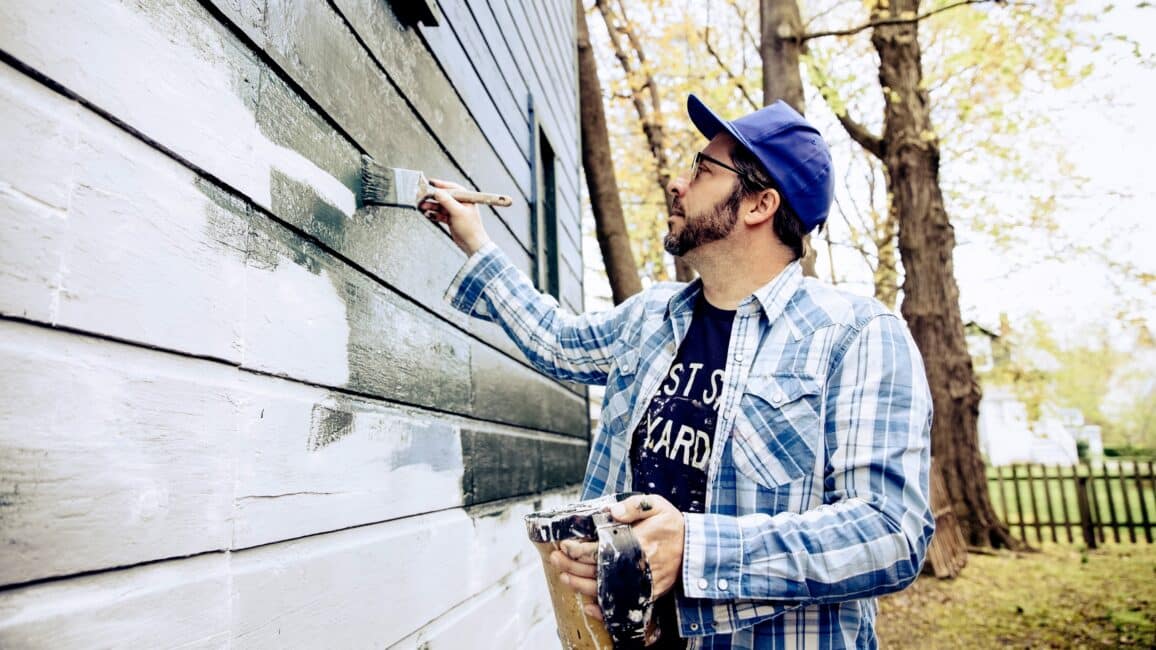Owning a home comes with many responsibilities. One of the biggest is keeping your home in good, working order. That includes paying for most repairs to your home as well as items in your home. Your homeowners’ insurance policy will usually cover some costs and repairs, such as damage from fire and, depending on your policy, mold damage, water damage, roof leaks, and some plumbing issues. But almost everything else, including foundation repairs, roof replacement, and air conditioning/heating replacement, can cost thousands of dollars. That’s when home improvement loans come in handy. Read on to learn about the different types of home improvement loans and which ones might be best for you.
What is a home improvement loan?
A home improvement loan is just a type of loan you use to pay for home improvements or repairs. It is usually an unsecured personal loan, but there are other options you can use for home improvements and repairs. We’ll take a look at the different types of loans you can use as a home improvement loan as well as some pros and cons of each.
Types of home improvement loans
Personal loans
A personal loan is a popular choice when it comes to borrowing money for home repair or improvement. When you take out a personal loan as a home improvement loan, the loan is usually unsecured. That means you do not need to put up collateral–something you own of value–to take out the loan. Personal loans are also a good option because they’re flexible. When you take out a personal loan, you can spend the money you borrow on just about anything you’d like. For example, if you qualified for a $5,000 loan and had $3,000 of home repairs you need to spend on, you could use the remaining $2,000 to put toward other debt or expenses. Also worth noting–even though personal loans don’t require collateral, you could use your car as collateral to possibly get a lower interest rate than you would get from an unsecured loan.
Home equity loans
Equity is the amount your home is currently worth, minus the mortgage you still owe on your property. A home equity loan allows you to borrow money using the equity in your home as collateral. What that means is that you’re borrowing back a portion of what has been paid through your mortgage payments. The usual amount given back in a home equity loan is up to 85% with fixed interest rates that usually last between five and 15 years. That means your interest rate won’t change throughout the term of your loan.
One of the negatives in taking out a home equity loan is that, when your home is being used as collateral, your home could be taken from you (foreclosed) if you’re unable to pay back your home equity loan. Another con is that most home equity loans have fees and closing costs you must pay upfront. So it’s important to compare lenders for interest rates, monthly payments, fees, and costs.
Home equity line of credit
A home equity line of credit, or HELOC, is a line of credit secured by your home that gives you a revolving credit line to use. Many people use a HELOC for large expenses or to consolidate debt on other loans, like credit cards. Some people also use a HELOC to cover the cost of college tuition. With a HELOC, you’re borrowing against the available equity in your home and the house is used as collateral. This is similar to a home equity loan. And like a home equity loan, you risk foreclosure of your home if you’re unable to pay back the HELOC. But there are differences between the two.
For example, borrowing money with a HELOC has two stages–a draw period and a repayment period. During the draw period, which is usually 10 years, you can borrow as much as you need, up to your credit limit. When the draw period ends, the repayment period, which is usually 20 years, starts. While a HELOC usually has a lower interest rate than other types of loans, it may not be the best option if you want to make the same monthly payment amount because HELOC interest rates change often.
FHA Title 1 loan
An FHA Title 1 loan, which is backed by the Federal Housing Administration (FHA), is a fixed-rate loan that can be used for home improvements and repairs. Loans under $7,500 are usually unsecured, which means you won’t need to offer any collateral. If the loan is over $7,500, you will have to offer your home as collateral so the lender is protected. You can get an FHA Title 1 loan through a lender approved by the Department of Housing and Urban Development (HUD). If you are approved for this type of loan, you can only use the funds on home improvements or repairs.
FHA 203(k) loan
An FHA 203(k) loan provides funds that let homeowners and homebuyers both purchase a home and borrow money to make repairs and improvements, all with one loan. The money you borrow through an FHA 203(k) loan can be used for labor and supply expenses. This can be an affordable way to pay for many home improvements, especially large ones. Because this is a type of mortgage, you will need to qualify for the loan. Any work covered under an FHA 203(k) loan must start within 30 days of closing, and projects must also be finished within six months. The minimum amount for an FHA 203(k) loan is $5,000, and that money must be used to pay for the home improvement work. If you’re borrowing money for an emergency repair, this type of loan might not be the right option for you since the application process takes a fairly long time.
Contractor financing
Another option is to finance the work your contractor does on your home. Contractor financing lets you as a customer pay for the work done to your home over some time. Customer financing for contractors can be a win-win for both the contractor and the customer. While customers pay over time, contractors get paid in full, or they get paid enough to finish the project and then get the rest of the money when the job is finished. One positive is that you usually don’t need to pay interest if you can pay the loan back quickly. But if your home repairs or improvements are going to be expensive, this may not be the loan for you. Before you sign any type of contract, research contractors–such as their credentials and customer reviews–so you know what you’re getting.
Alternatives to home improvement loans
You probably noticed that some of the home improvement loan options mentioned above are secured. That means your home is used as collateral and could be foreclosed if you’re unable to make your loan payments. If your home repairs or improvements don’t need to be done immediately, it might make sense to think about other loan options once you look at your budget. But if your home repairs are an emergency, there are some other options besides home improvement loans if you need fast money for repairs.
Reverse mortgage
Like a regular mortgage, a reverse mortgage lets you borrow money by using your home as security for the loan. The difference between a traditional mortgage and a reverse mortgage is that you don’t make monthly payments on a reverse mortgage. Instead, you repay the loan once you no longer own it. With a regular mortgage, you pay down your balance each month; with a reverse mortgage, your balance goes up because of interest and closing costs that are added to the amount you already owe. However, if you’ve already paid off your mortgage, this could be a good option to pay for home repairs or improvements because you can pay off the reverse mortgage with the money you make from the sale of your home.
Cash-out refinance
Cash-out refinancing replaces your current home mortgage with another mortgage that will cost you more in monthly payments. But this type of loan allows you to receive the difference between the two loans–your current mortgage and the new mortgage–in cash. The cash amount depends on the equity you’ve built up in your home. The money you get from a cash-out refinance can be used for just about anything. Many homeowners use the lump sum of cash they get to repair or remodel their homes.
HUD assistance programs
The Department of Housing and Urban Development (HUD) is a department of the federal government that addresses America’s housing needs, improves and develops the nation’s communities, and enforces fair housing laws. HUD offers assistance programs to help homeowners, especially those with low income, afford housing as well as home improvements and repairs. Many low-income homeowners could qualify for grants or interest-free loans from HUD.
Credit cards
Sometimes the simplest option is the best option. If you have good credit, you may be able to qualify for a credit card with either a 0% or very low introductory Annual Percentage Rate (APR). These introductory rates can last from a few months to over a year–so, if you’re able to pay off the cost of your home repair or improvement project during that time, a credit card is a great way to pay for it. However, once that introductory period ends, an average credit card APR can be several points higher than the average personal loan. And that means you’ll be paying more in fees and interest than you would with a personal loan.



